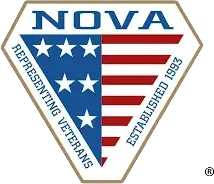What is the best way to appeal a VA Disability Claim
It is often said that few people want to see how “the sausage” is made. That is, few people want to concern themselves with the process by which a product is made or a decision is reached. Instead, most people are only concerned with the end product. To continue the image, most people only care that the “sausage” at the end of the process tastes good and are not concerned with the ingredients and work that went into making it.
This applies to the VA disability appeals process. You may feel that the only thing that matters is having your claim for benefits approved with the highest rating possible. Knowing the steps through which your appeal goes may seem both uninteresting and irrelevant to your situation.
Why It Pays to Know How a VA Disability Claim Appeal is processed
There is benefit in knowing what happens from the time you file your Notice of Disagreement to the time you receive a decision on your appeal. The whole process can be lengthy and there can be delays along the way. Knowing the steps that the VA will follow can help you better anticipate delays and temper your expectations. Getting benefits through a successful appeal following an initial denial is a marathon, not a sprint: even the shortest appeal lane can take up to a year to complete.
You File a Notice of Disagreement
The appeals process begins in earnest when you file a Notice of Disagreement (NOD) that sets forth your intention to appeal the VA’s initial decision on your claim. A Notice of Disagreement need not comply with any specific form other than it should contain a statement that expresses your dissatisfaction with the VA’s decision and an intention to appeal. This NOD should be submitted within one year of your receipt of VA’s decision letter.
You Choose an Appeal “Lane”
Under the Appeals Modernization Act, you now have three options for proceeding with your appeal. You can:
- File a Supplemental Claim and add or identify additional evidence you want the VA to consider in evaluating your claim. According to the VA, this can take up to four months or more to receive a decision once the new information is submitted or collected by the VA
- Request a Higher-Level Review, in which a claims officer with more experience and authority will review the evidence submitted and see if the initial decision officer made any errors in deciding your claim.
You also have the option to request a telephone conference with the claims officer who will be reviewing your claim, although this can lead to a delay longer than the four-month timeframe the VA claims it takes to get a Higher-Level Review decision.
- Ask for the Board of Veterans’ Appeals to review your claim. This is the most in-depth review option, and the time it takes to navigate this lane depends on whether you want to submit new evidence and whether you want an actual hearing. At the low end, it will take about a year or more from the time you request a Board review to get through this process.
If you submit additional evidence, it must be submitted within 90 days of you filing your Notice of Disagreement. From there, it can take about a year for the Board to render its decision.
If you request a hearing, you may submit additional evidence but it will take up to two years or more to receive a decision. The longest delays are for those claims where the veteran has requested an in-person hearing before a veterans law judge.
When to Contact a Veteran’s Law Attorney
Contacting an experienced veteran’s law attorney early on can help move your appeal along through the process. While your attorney cannot fix delays and issues the VA has internally, your attorney can help you submit your forms and filings correctly and quickly.
For professional assistance with your VA disability appeal, call Werner, Hoffman, Greig & Garcia at 561-320-8285, or complete our online contact form and schedule a consultation with us.

...In Just A Few Clicks.
- "No Win, No Fee" Promise
- Real Trial Attorneys with Real Experience
- Veteran-Owned & Operated
- Always Compassionate & Client-Focused
- Proven Record of Results
























